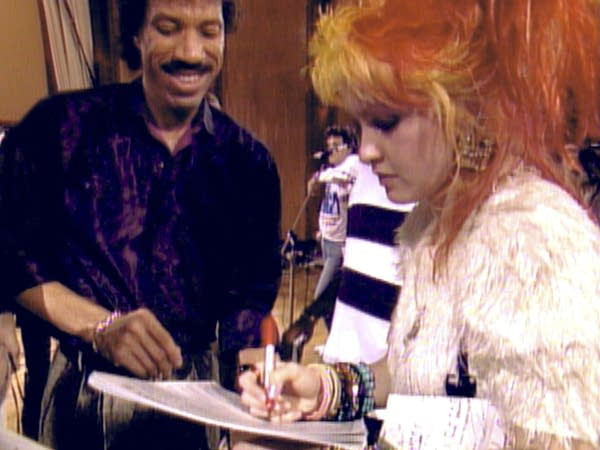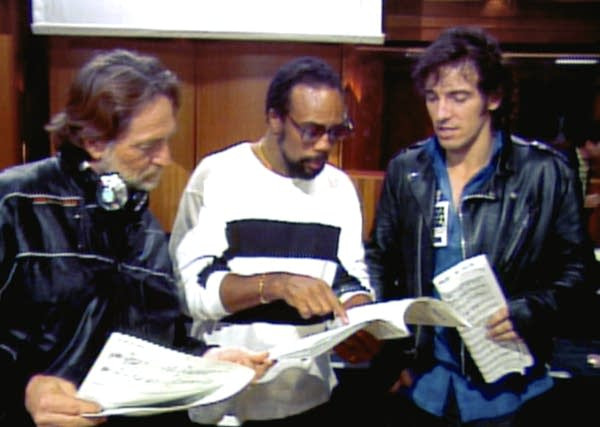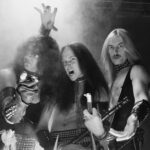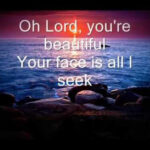Thirty-nine years ago, a constellation of music’s brightest stars descended upon a Los Angeles recording studio, embarking on an all-night session with the ambitious goal of creating music history. The result was “We Are the World,” the 1985 charity single conceived to combat famine in Africa. This iconic song united voices from across genres, including legends like Michael Jackson, Willie Nelson, Bob Dylan, Ray Charles, Diana Ross, Stevie Wonder, and Bruce Springsteen, among many others.
Now, fans are invited to witness the magic and mayhem of that historical night with the new Netflix documentary, “The Greatest Night in Pop.” This behind-the-scenes film offers an intimate look at the complex journey of creating this megahit, providing fresh perspectives and untold stories behind the song “Song We Are The World.” Set to stream this month, the documentary is described by producer Julia Nottingham as “a celebration of the power of creativity and the power of collective humanity,” highlighting the song’s enduring inspiration for artists and audiences alike.
The documentary filmmakers gained unique access and insights by interviewing key figures such as Lionel Richie, Bruce Springsteen, Smokey Robinson, Cyndi Lauper, Kenny Loggins, Dionne Warwick, and Huey Lewis. Adding to the immersive experience, these interviews were conducted within the very walls of A&M Studios, the legendary location where the original recording session unfolded in 1985. Director Bao Nguyen, though born after the song’s release, recognized the significance of returning to this space, stating, “I knew it was important to recreate those memories by just sort of walking into that room and what that energy created for them.”
“The Greatest Night in Pop” skillfully weaves together never-before-seen footage captured by four cameras during the USA for Africa session with audio recordings from journalist David Breskin. This combination offers a richer understanding of the dynamics and behind-the-scenes drama that went beyond what the official “We Are the World” music video portrayed. The documentary doesn’t shy away from revealing some of the less polished moments, such as Al Jarreau’s overindulgence in wine and Bob Dylan’s initial discomfort, which led to Stevie Wonder’s humorous impersonation to guide Dylan’s solo performance.
 Lionel Richie and Cyndi Lauper in "The Greatest Night in Pop" documentary
Lionel Richie and Cyndi Lauper in "The Greatest Night in Pop" documentary
Cyndi Lauper’s jewelry mishap, which inadvertently extended the recording session due to sound interference, and Prince’s enigmatic near-participation are also explored. Prince, who was reportedly at a restaurant on Sunset Strip, initially proposed contributing a guitar solo remotely. Sheila E. candidly admits her feeling that she was invited to the session partly to entice Prince to join. Ultimately, Prince’s absence meant the world missed out on a potentially iconic Jackson-Prince collaboration. Nguyen emphasizes the documentary’s commitment to authenticity: “For me, it was just important that we told a story that was honest. It is an honest story about the night and all the things that could have gone wrong — that did go wrong — but at the end of the day, it became this beautiful family.”
The documentary is rich in captivating details, painting a vivid picture of the night. Scenes like Billy Joel sharing a kiss with then-wife Christie Brinkley before entering the studio and the anecdote of Bruce Springsteen driving himself in a Pontiac GTO add a layer of personal charm. Other highlights include witnessing Joel experimenting with alternative lyrics, the collective of stars spontaneously gathering around Stevie Wonder at the piano for the first run-through, and Lionel Richie’s diplomatic skills in navigating potential disagreements.
In a moment of lighthearted instruction, the assembled superstars were gently asked to minimize riser stomping, which was impacting the audio recording. Producer Quincy Jones, known for his meticulous approach, preemptively addressed any ego clashes by posting a sign that read: “Check Your Ego at the Door.” Lionel Richie, in a Sundance Film Festival interview with the AP, noted Ray Charles’ presence as particularly grounding, given his legendary status. Bob Dylan’s participation also served to temper any potential complaints. Richie reflected, “We got the right players to come in. And then once we realized we were trying to save people’s lives, then it’s not about us anymore. But to deliver that in one night? An impossibility.”
The documentary firmly roots the “song we are the world” project in the activism of Harry Belafonte, who had been a vocal advocate for addressing the Ethiopian famine. Belafonte’s presence in the studio, singing on “We Are the World,” added a layer of profound meaning to the endeavor. In a spontaneous and heartwarming moment, the group, energized and exhausted in the early morning hours, serenaded Belafonte with his classic “Banana Boat (Day-O),” playfully adapting the lyrics to “Daylight come and we want to go home.”
Another interesting revelation is Kenny Loggins’ suggestion that Huey Lewis step in for Prince to perform the solo immediately following Michael Jackson’s. Huey Lewis humorously recalls the pressure of the moment: “It was just one line, but my legs were literally shaking.” The documentary also revisits Stevie Wonder’s suggestion to include Swahili lyrics, an idea that Waylon Jennings initially resisted. This idea was eventually dropped when it was clarified that Swahili was not spoken in Ethiopia. Footage of Bob Geldof, a key figure behind Live Aid, delivering an inspiring speech to the assembled artists before the recording session further contextualizes the broader scope of the humanitarian movement at the time.
 Willie Nelson, Quincy Jones, and Bruce Springsteen in "The Greatest Night in Pop"
Willie Nelson, Quincy Jones, and Bruce Springsteen in "The Greatest Night in Pop"
“The Greatest Night in Pop” also delves into the pre-production phase, revealing that songwriters Michael Jackson and Lionel Richie were still refining “song we are the world” just ten days before the recording session on January 28, 1985. Upon arrival at the studio, footage captures the superstars, without their entourages, greeting each other with nervous hugs. Lionel Richie aptly described the atmosphere as being “like first day at Kindergarten.” The date of the recording was strategically chosen to coincide with the American Music Awards, hosted by Lionel Richie, who both performed and won six awards that night. Following the awards ceremony, the music elite convened at A&M Studios for the historic all-night recording session.
Cyndi Lauper’s participation was almost derailed by her boyfriend’s skepticism, who doubted the single’s potential success. However, Lionel Richie intervened, urging her to recognize the significance of the event, telling her, “It’s pretty important for you to make the right decision. Don’t miss the session tonight.” Documentary producer Nottingham questions whether such a gathering of superstar talent could be replicated in today’s world, given the pervasive influence of social media and the complexities of managing large entourages. Despite these challenges, she hopes the “song we are the world” story and “The Greatest Night in Pop” will “serve as an inspiration for other artists to keep trying and do these things for great causes.” The documentary serves as a potent reminder of the unifying power of music and the enduring legacy of “We Are the World” as a symbol of hope and collective action.


